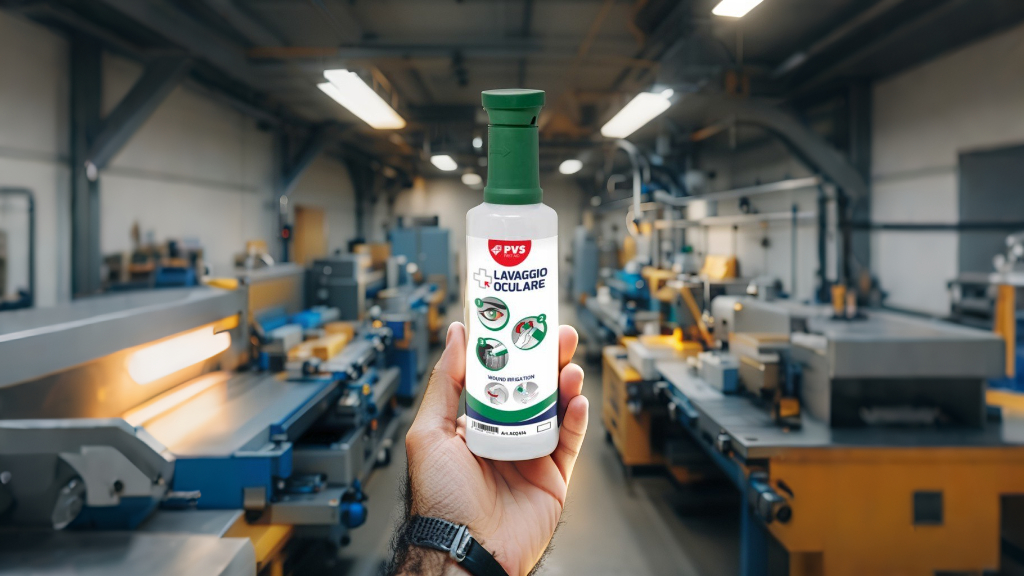
Eye Washing and Emergency Showers: What the Law Says in Italy and Abroad
When working with hazardous chemicals, worker safety is a top priority. Emergency showers and safety eyewashes are critical devices to reduce harm in the event of accidental contact with corrosive, irritating or toxic substances.
Italian Legislation: When Eye Washing is Mandatory
In Italy, the relevant legislation is the Legislative Decree. 81/2008, the Consolidated Occupational Safety Act. This decree states that the employer must take all necessary collective protective measures for the safety of employees.
Emergency showers and eyewashes then become mandatory when:
- Hazardous chemicals are used on the farm
- There is a risk of accidental contact with eyes or skin
- The risk is indicated in the Risk Assessment Document (DVR).
At the technical level, the reference standard is UNI EN 15154, the European standard that defines requirements and performance of emergency flushing devices.
How to Choose the Type of Eyewash or Emergency Shower
Choosing the right device is not random and depends on three main factors:
- RSPP – Prevention and Protection Service Manager: assesses risks and cooperates with employer and competent doctor.
- DVR – Risk Assessment Document: specifies the type of device needed (full body shower, eye wash or combination).
- Type of environment and substances: in the presence of acids → body shower + eye wash; in the laboratory → countertop eye wash; on the construction site → portable solutions.
Focus Europe: France and Germany
In France, guidance for emergency showers and eyewashes is contained in the Code du Travail (Articles R4224-14 et seq.), which requires the employer to provide first aid means appropriate to the risk. Periodic monthly checks and mandatory training for those handling hazardous substances are recommended.
In Germany, in addition to EN 15154, there are DGUV guidelines (Regeln 109-006) that stipulate: maximum distance of 10 seconds from the point of risk, continuous water supply for at least 15 minutes, and signage in accordance with DIN 4844. Documentation of maintenance is mandatory.
Normative Comparison Table
| Country | Normative Reference | Main Requirements | Operational Notes |
|---|---|---|---|
| Italy | Legislative Decree 81/2008 + UNI EN 15154 | Obligation to install in the presence of chemical hazards; devices selected based on DVR | Choice defined by RSPP and DVR. Recommended inspections and maintenance. |
| France | Code du Travail (art. R4224-14) + EN 15154 | Mandatory first-aid equipment; monthly periodic inspection | Mandatory training for exposed workers. Compliant signage. |
| Germany | DGUV Regel 109-006 + DIN 4844 | Distance ≤10 s from hazard; continuous flow ≥15 min | Documented maintenance and functional testing required. |
| USA / Canada | ANSI/ISEA Z358.1-2014 | Activation within 1 s; water temperature 16-38 °C; minimum flow rate defined | Standard often used to standardize procedures at global production sites. |
Eye Wash in the Rest of the World
In the United States and Canada, the reference standard isANSI/ISEA Z358.1, which specifies trigger times, water temperature and minimum flow rate. This standard is also adopted by many multinational companies to ensure uniform procedures across plants.
Conclusions
Eye wash is not optional-it is a legal requirement for all companies exposed to chemical hazards. Collaboration between employer, RSPP and competent physician is essential to choose the right solution.
A well-done DVR not only ensures regulatory compliance, but also protects workers and reduces emergency response time.




